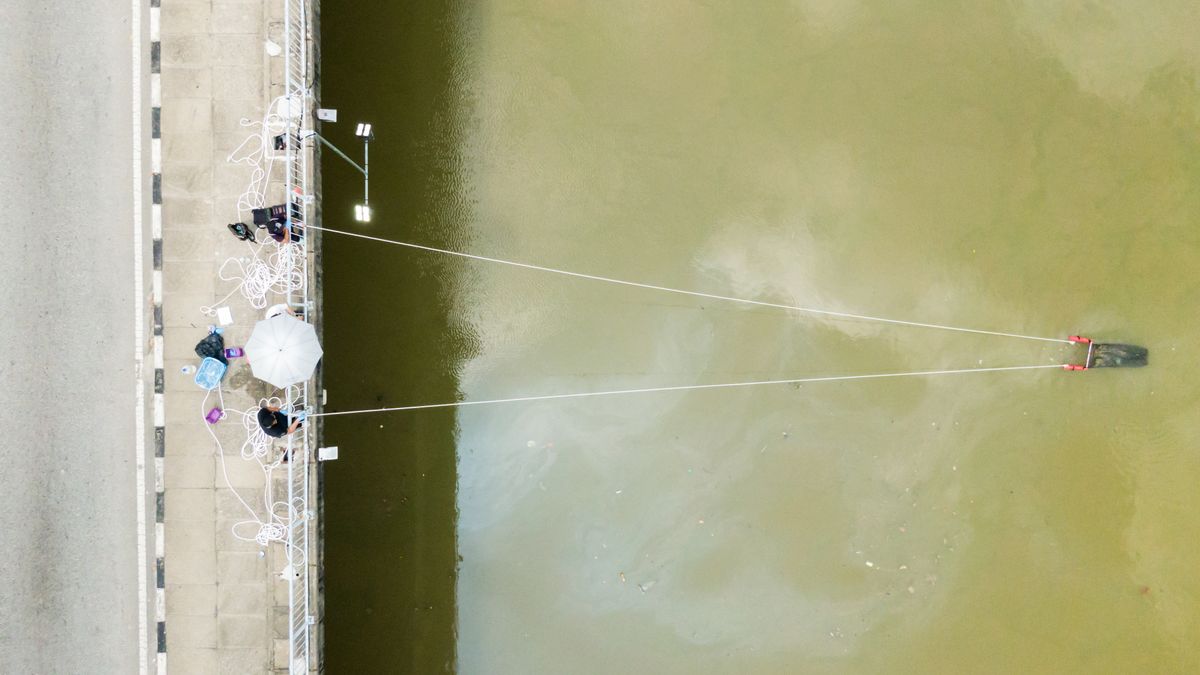
Since the very start of our efforts, we have always believed that to develop the most optimal cleanup technologies it’s essential to truly understand the problem. That is why we’ve been extensively researching rivers since 2016.
The river research team has made it their mission to characterize plastic emissions from the 1000 most polluting rivers into the ocean, by quantification and researching variation and governing drivers. To achieve our goal, we use a multipronged approach including developing measuring techniques and modeling frameworks, data collection, and analysis and working with expert partners.
In 2016, the team conducted GPS tracker tests in the Netherlands and Myanmar. The testing was done to provide information about the flow of plastic in the rivers, the so-called ‘hotlines’. These areas in rivers are where plastic naturally accumulates e.g. flowlines in the river or static accumulation of waste on the riverbanks. Two types of trackers were tested; a self-built GPS receiver and smartphones. Both in the Netherlands and in Myanmar, the tests were promising in identifying hotlines, with trackers ending up on waste rich shorelines. In June 2017, the first research paper by our river team was published on Researchgate, “River Plastic Emissions to the World’s Oceans”. The findings centered around a global model for river plastics and understanding the seasonality of inputs.
Our research team expanded in 2018 and is supported by several (graduate) interns. They have so far:
- Developed new standard measurement methods, ranging from low-tech (visual counting from bridges) to high-tech (automated camera monitoring);
- Conducted measurements in more than twenty rivers and waterways in 2018 in Europe and Southeast Asia;
- Improved fundamental understanding of riverine plastic transport. New insights in drivers of plastic pollution, seasonality, and spatial variation;
- Developed a new global river model, showing that plastic emission into the ocean is a more distributed problem than previously assumed;
- Established research partnerships with universities in Switzerland, Germany, France, Netherlands, Vietnam, Thailand, and Malaysia
In October of 2018, another research paper was published in Frontiers of Marine Science – A methodology to characterize riverine macroplastic emission into the ocean. In this paper, we present a new methodology to characterize riverine macroplastic dynamics. The proposed methodology was applied to estimate the plastic emission from the Saigon River, Vietnam. Our team has conducted extensive fieldwork to gain insights and collect data in Indonesia, Thailand, France, the Netherlands, Benin, Germany, Mexico, the Philippines, the Dominican Republic and Jamaica resulting in a wider understanding of plastic emissions and the impact on rivers and oceans.
Later, in January 2019, an extensive research project was undertaken in Guatemala on the Motagua River. Our team visited numerous sites to understand the source of the debris, how it travels through the waterways, where it ends up and how it travels further to the ocean. Working together with local officials and meeting the local population to listen to their views on the problem was not only insightful but gives a renewed sense of purpose to help clean up the global waterways.
Our third river research paper was published in July of this year, “Riverine plastic emissions from Jakarta into the ocean.” This study was the result of our analysis of the data collected from the installed Interceptor™ and further research.
As we continue to learn more this these studies, we are encouraged by our research and findings to continue to develop more ways in which to conduct research (e.g. camera detection, drones, and AI image recognition).




